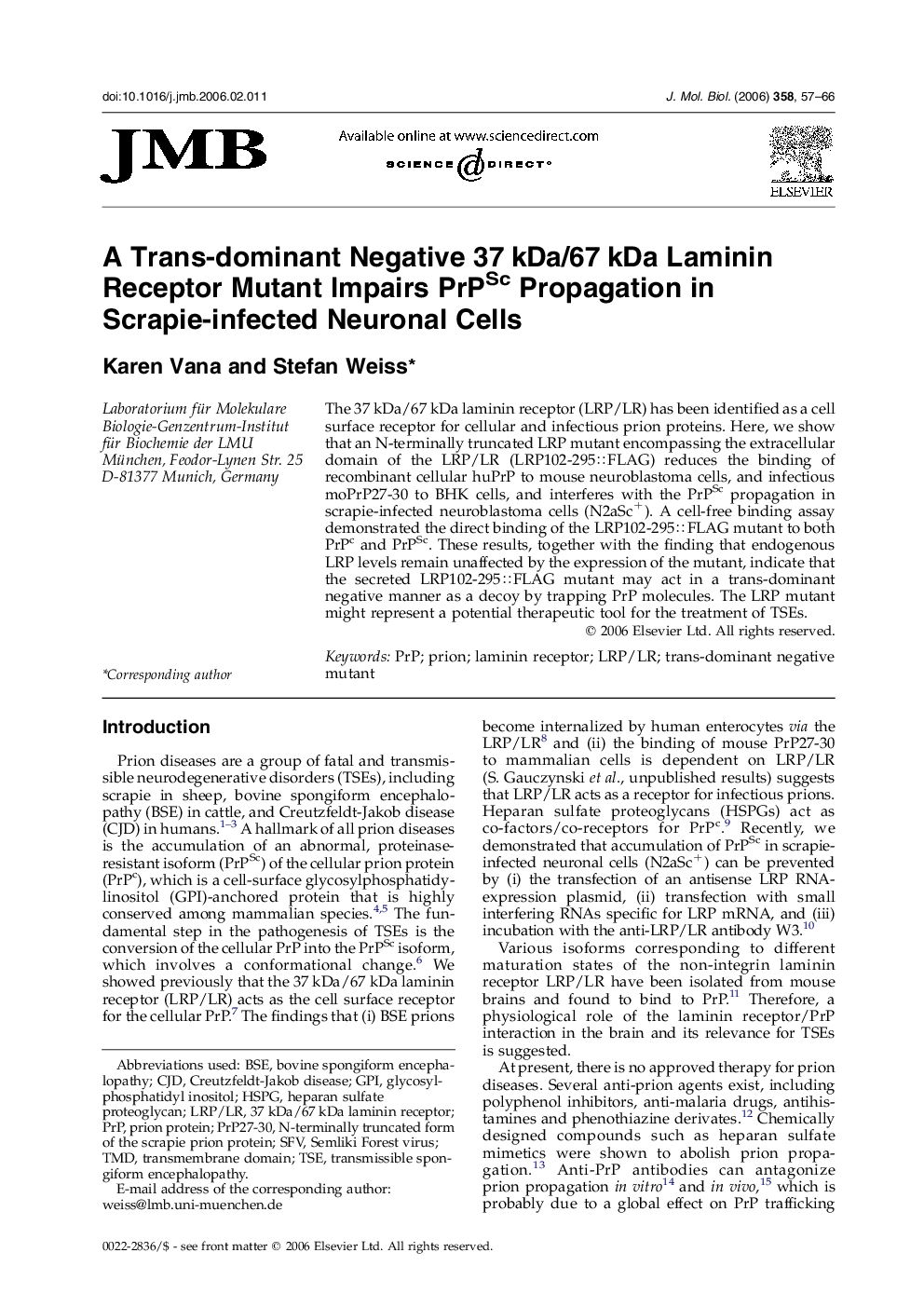| Article ID | Journal | Published Year | Pages | File Type |
|---|---|---|---|---|
| 2189788 | Journal of Molecular Biology | 2006 | 10 Pages |
The 37 kDa/67 kDa laminin receptor (LRP/LR) has been identified as a cell surface receptor for cellular and infectious prion proteins. Here, we show that an N-terminally truncated LRP mutant encompassing the extracellular domain of the LRP/LR (LRP102-295∷FLAG) reduces the binding of recombinant cellular huPrP to mouse neuroblastoma cells, and infectious moPrP27-30 to BHK cells, and interferes with the PrPSc propagation in scrapie-infected neuroblastoma cells (N2aSc+). A cell-free binding assay demonstrated the direct binding of the LRP102-295∷FLAG mutant to both PrPc and PrPSc. These results, together with the finding that endogenous LRP levels remain unaffected by the expression of the mutant, indicate that the secreted LRP102-295∷FLAG mutant may act in a trans-dominant negative manner as a decoy by trapping PrP molecules. The LRP mutant might represent a potential therapeutic tool for the treatment of TSEs.
